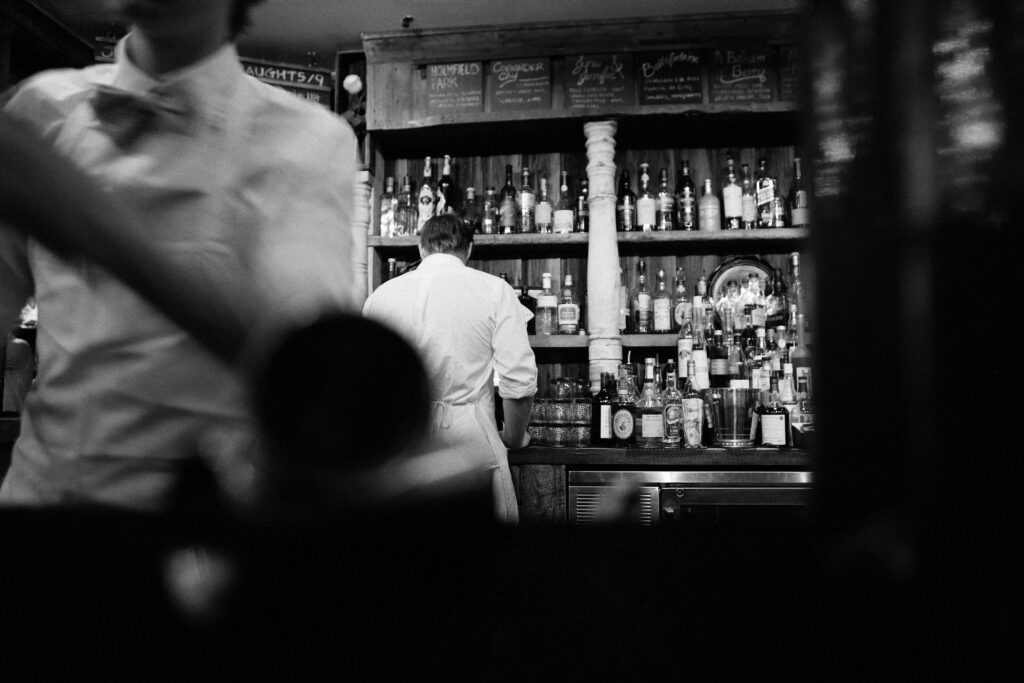
So you want to learn how to get a restaurant loan? Obtaining a loan can be a challenging process. However, it is possible to secure the financing you need with the right approach.
- Develop a solid business plan: A well-developed business plan is crucial for obtaining a restaurant loan. It should outline your concept, target market, financial projections, and other vital details about your restaurant. A business plan will help lenders understand your vision and evaluate your venture’s potential risk and profitability.
- Determine your financing needs: Before you begin your search for financing, you should determine the amount of money you need to start or expand your restaurant. Loan size will depend on various factors, such as the size and location of your establishment, the type of food you serve, and your marketing strategy. Understanding your financing needs will help you target suitable lenders and financing options.
- Research lenders: Various lenders offer restaurant loans, including banks, credit unions, and alternative lenders. Each has its requirements and criteria for approval. It would help if you researched lenders that specialize in restaurant financing and compared their rates, terms, and eligibility criteria.
- Gather financial documents: To apply for a restaurant loan, you must provide financial documents demonstrating your creditworthiness and financial stability. Your documents will include personal and business tax returns, bank statements, profit and loss statements, and balance sheets. You should ensure that your financial records are accurate and up-to-date before applying for a loan.
- Apply for a loan: Once you have identified potential lenders and gathered the necessary documents, you can begin the loan application process. Submit your application, provide financial records, and go through a credit check and underwriting process. Be prepared to answer questions about your business plan, financing needs, and other aspects of your restaurant.
Obtaining a restaurant loan requires careful planning and preparation. By following these steps and working with suitable lenders, you can secure the financing you need to make your restaurant dreams a reality.
SBA LOANS FOR RESTAURANTS
Small Business Administration (SBA) loans are a popular source of financing for many small businesses, including restaurants. The SBA designed these loans to provide long-term, low-interest financing to small businesses that might not otherwise qualify for traditional bank loans. This section will look closely at SBA loans for restaurants and how they can help you get the financing you need to start or expand your restaurant.
The SBA designed these loans for restaurants to use for a variety of purposes, including:
- Startup costs: If you’re opening a new restaurant, you’ll need to purchase equipment, lease a space, and hire staff. SBA loans can help you cover these startup costs.
- Working capital: As a restaurant owner, you’ll need to pay rent, utilities, and payroll expenses. SBA loans can help you cover these ongoing expenses.
- Expansion: If you want to expand your restaurant by adding a new location or purchasing additional equipment, an SBA loan can help you finance the development.
Several types of SBA loans for restaurants include 7(a) loans, 504 loans, and microloans. Each loan program has different terms and requirements, so it’s essential to research each option and choose the one that’s right for your restaurant.
7(a) loans are the most common type of SBA loan and are available to most small businesses, including restaurants. The SBA designed 7a loans for various purposes, including working capital, equipment purchases, and real estate. The maximum loan amount for a 7(a) loan is $5 million and guaranteed up to 85% of the loan amount. Interest rates for 7(a) loans are typically lower than those of traditional bank loans, making them an attractive option for restaurant owners.
504 loans were designed for businesses that need to purchase commercial real estate or equipment. These loans are often used for large expansion projects or to buy a building for the restaurant. The maximum loan amount for a 504 loan is $5.5 million, and the SBA guarantees up to 40% of the loan amount.
Micro loans are smaller loans, typically less than $50,000, and are designed for startups or small businesses that need working capital or funds to purchase equipment. Restaurants often use micro loans to purchase kitchen equipment or cover operating expenses.
To apply for an SBA loan, you’ll need a solid business plan, a good credit score, and collateral to secure the loan. You’ll also need to provide detailed financial statements and tax returns for your restaurant. The application process can be lengthy, so it’s essential to start early and work with a lender that has experience with SBA loans.
In addition to the benefits of low-interest rates and extended repayment terms, SBA loans for restaurants also come with several other advantages. For example, SBA loans do not require a large down payment, which can be helpful for restaurant owners who may not have a lot of cash. Additionally, SBA loans can be used to refinance existing debt, which can help lower monthly payments and improve cash flow.
SBA loans are an excellent financing option for restaurants that need to raise capital for startup costs, working capital, or expansion. With low-interest rates, long repayment terms, and flexible loan options, SBA loans can help your restaurant grow and succeed. If you’re considering an SBA loan for your restaurant, be sure to research and work with a lender with experience with SBA loans. We at The Tier Group would be happy to partner you with one of our knowledgable lenders.
PPP LOAN
The COVID-19 pandemic has significantly impacted the restaurant industry, with many businesses struggling to stay afloat. The Paycheck Protection Program (PPP) was introduced by the Small Business Administration (SBA), and PPP loans for restaurants have been a lifeline for many businesses in the industry.
The government created this program in response to the COVID-19 pandemic. It provides forgivable loans to small businesses, including restaurants, to help them cover payroll and other operating expenses. It is designed to keep employees on the payroll and keep companies operating during the pandemic.
The PPP loans are available to businesses with 500 or fewer employees, including self-employed individuals, sole proprietors, and independent contractors. The loan amount is based on the business’s average monthly payroll expenses, up to a maximum of $10 million. In addition, the loan can be used to cover payroll expenses, rent, utilities, and other operating expenses.
One of the key benefits of PPP loans for restaurants is that they are forgivable if the loan is used for eligible expenses. Examples include payroll and operating expenses; the loan can be fully or partially forgiven. This means that the loan does not need to be repaid, effectively turning it into a grant.
Businesses must use the loan funds for eligible expenses within the covered period. The covered period for PPP loans is 8 to 24 weeks from the date the loan is disbursed. At least 60% of the loan must be used for payroll expenses to be eligible for complete forgiveness.
Businesses can work with a participating lender. The application process is relatively simple and requires companies to provide information about their payroll expenses and other operating expenses. Once approved, the loan funds are disbursed to the business’s bank account.
During the pandemic, PPP loans for restaurants have been a lifeline for many businesses. The loans have helped companies to cover payroll expenses, rent, utilities, and other operating expenses, which has allowed them to stay in business and keep their employees on the payroll. The forgivable nature of the loans has also been a significant benefit, providing companies with much-needed financial relief.
PPP loans for restaurants were a vital tool for businesses during the COVID-19 pandemic. While these loans may not exist, The Tier Group specializes in finding and navigating clients through lucrative funding options.
Loan to Buy Existing Restaurant Business
Acquiring an existing restaurant business can be an excellent opportunity for aspiring restaurant owners who want to enter the industry without starting from scratch. Purchasing a restaurant is a significant investment; most people don’t have the funds to pay for it outright. That’s where a loan comes in. Researching lending options is the first start. You will want to be able to prove that you are a severe buyer before you begin to make offers. It will also come in handy when you do your due diligence, ask to look at the restaurant’s financials, etc. Be sure to look at its revenue and profit margins. You’ll also want to ensure that the restaurant is financially viable and has a good reputation. Lastly, a professional valuation may be in order. Determining the actual value of the restaurant is your first step to long-term success. The business value will help you negotiate a fair price and ensure you’re not overpaying.
Getting a loan to buy an existing restaurant business requires preparation and research. Ensure you have all the necessary financial documents and a solid business plan. Do your due diligence on the restaurant you want to buy, and hire a professional to conduct a valuation. With the proper preparation and patience, you can secure the financing you need to make your restaurant dreams a reality.
Restaurant Equipment Financing for Startups
Leasing restaurant equipment can be an excellent option for restaurant owners who need equipment but don’t have the funds to purchase it outright. However, some business owners may have concerns about leasing equipment because of the credit check that is often required. Fortunately, options are still available for those wanting to lease restaurant equipment.
One option for leasing restaurant equipment is to work with a lease-to-own company. These companies specialize in leasing equipment to business owners who may not have the best credit. In most cases, the leasing process is relatively straightforward. Business owners must provide basic information about their business and agree to the lease terms. If approved, the business owner can lease the equipment they need without worrying about a credit check.
Another option for leasing restaurant equipment without a credit check is to work with a vendor that offers equipment financing. Some equipment vendors have financing programs allowing business owners to rent the necessary equipment without needing a credit check. Unfortunately, these programs are often easier to qualify for than traditional equipment leasing programs, making them a good option for those with credit issues.
It’s important to note that while leasing restaurant equipment without a credit check can be a great option, it often comes with higher interest rates and fees. The leasing company or vendor is taking on more risk by leasing to a business owner with less-than-ideal credit. As such, it’s essential to review the lease agreement carefully and understand the total cost before signing on the dotted line.
Additionally, business owners should know that leasing equipment without a credit check may limit their equipment options. For example, some leasing companies and vendors may only offer certain types of equipment or limit the amount you can lease. As such, it’s essential to carefully consider the equipment needs of the restaurant and ensure that the lease agreement meets those needs.
